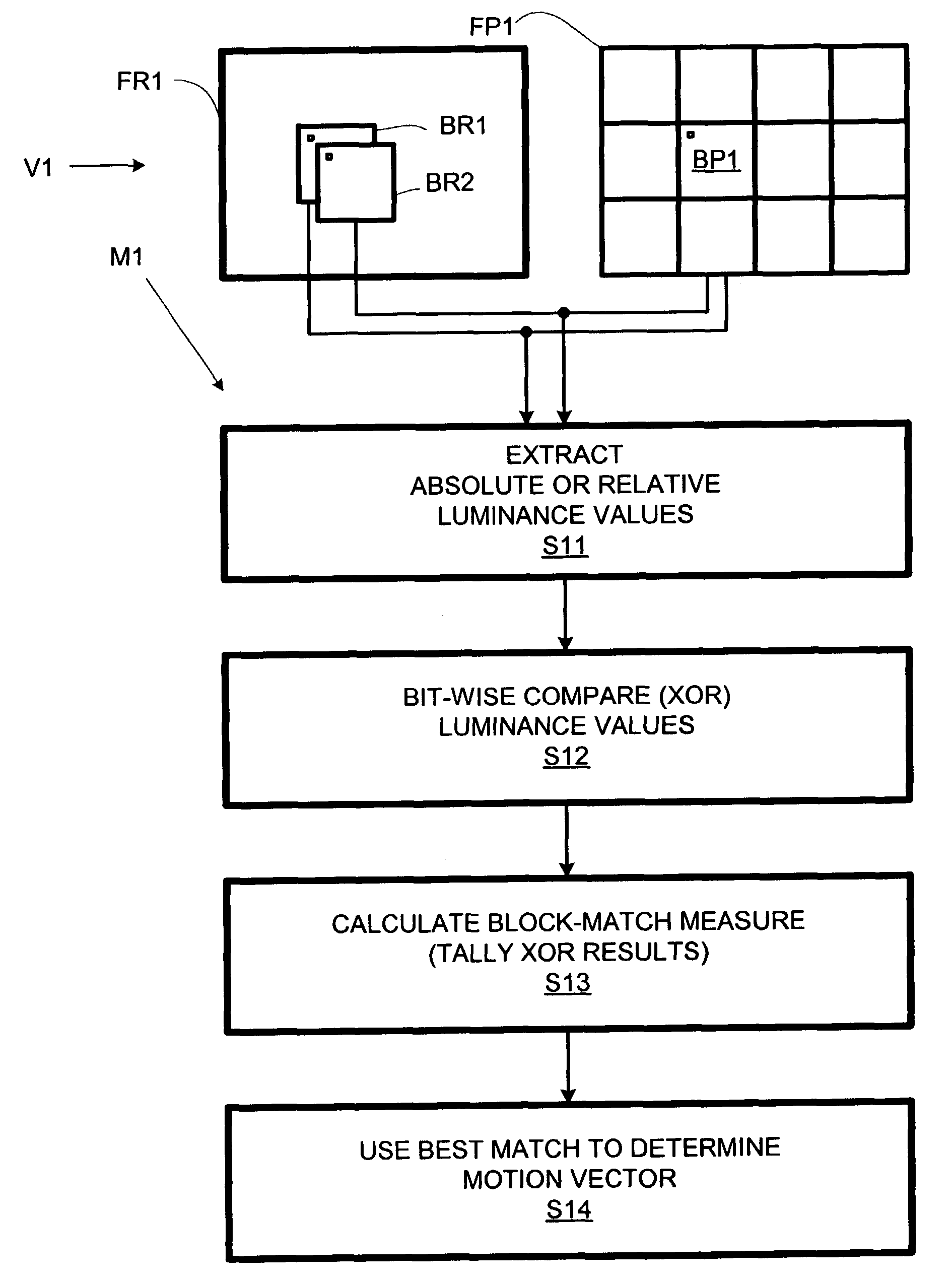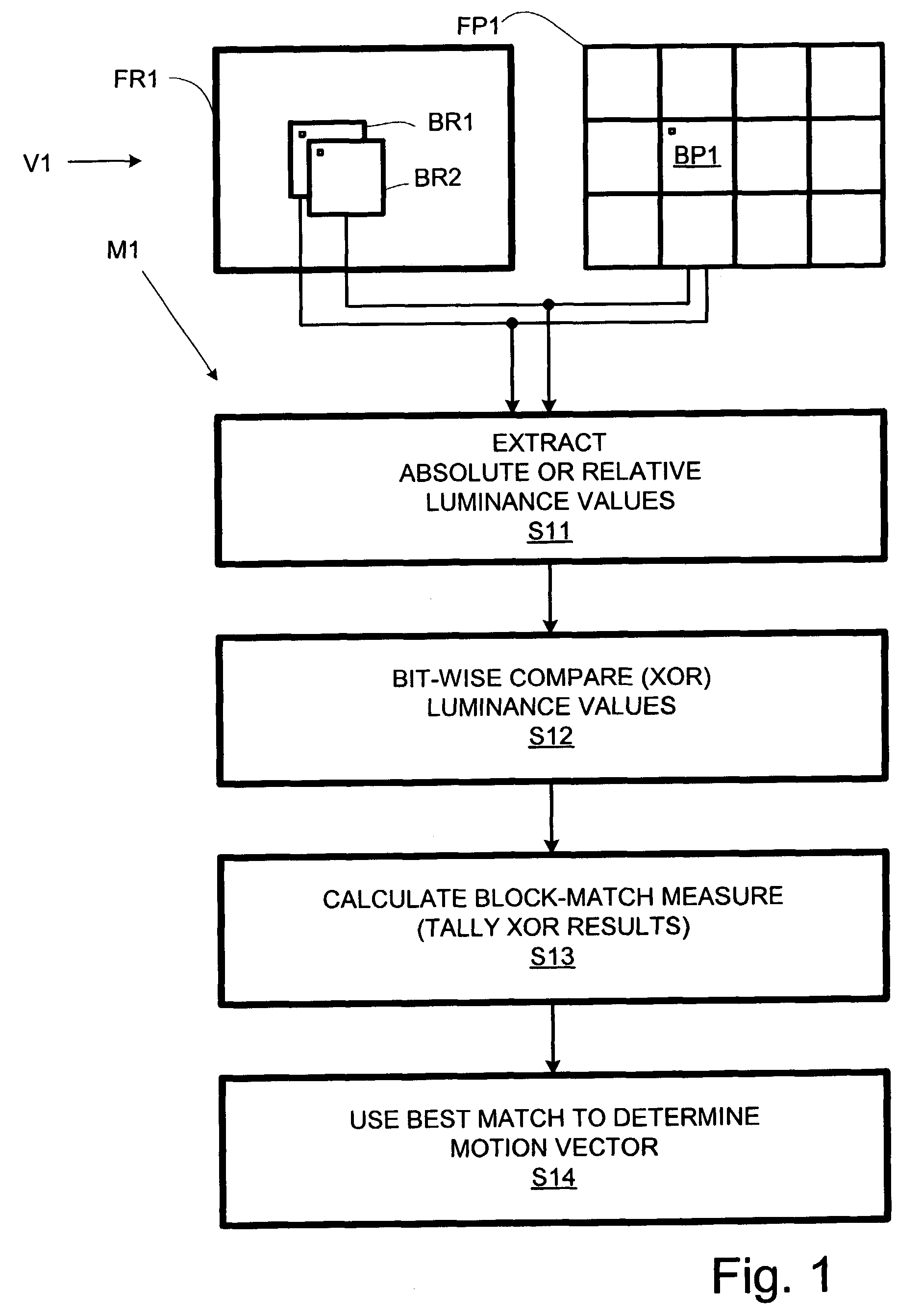Motion estimation using bit-wise block comparisons for video compression
a bit-wise block comparison and video compression technology, applied in the field of digital image processing, can solve the problems of large amount of data for storage and bandwidth, large redundancy in video data, and inability to identify unchanged pixel positions in many situations to provide optimal compression, etc., to achieve greater compression effectiveness, improve block-match accuracy, and preserve pattern information useful for image matching
- Summary
- Abstract
- Description
- Claims
- Application Information
AI Technical Summary
Benefits of technology
Problems solved by technology
Method used
Image
Examples
example 1
[0038]The blocks are 4×4 pixels, with absolute luminance data being 4-bits per pixel. The luminance data for a reference block and a predicted block is loaded into registers, with one register sufficing to store all the luminance data for a block. An XORPopCount instruction specifying the two registers as operands is executed and the result is stored in a result register. This result serves as the block-match measure to be compared with other block-match measures to determine a best match and, thus, a motion vector.
example 2
[0039]The blocks are 16×16 pixels, with absolute luminance data being 8-bits per pixel. Thirty-two 64-bit registers are required to represent the luminance data for a block. Thus, 32 iterations of an XOR-plus-PopCount-plus-Accumulate loop can be used to provide a block-match measure. Preferably, a single XOR-PopCount instruction combines the XOR and PopCount operations.
example 3
[0040]As in Examiner 2, the blocks are 16×16 with luminance data being 8-bits per pixel. In this case, step S11 of extracting luminance values involves computing an average luminance value for each block. To this end, the luminance values for sixteen collectively well-distributed pixels are averaged. Each block pixel is assigned a 2-bit value: 00 if its luminance value is equal to the rounded average, a 01 is it is greater than the average, and a 10 if it is less than the average. Note that while two bits are used to represent the luminance of each pixel, the actual pixel depth is between one and two as the value 11 is not used.
[0041]Eight 64-bit registers are required to represent each block. Eight iterations of a loop including an XOR-PopCount instruction are used to obtain the match measure. The XOR instruction yields a 00 when the relative pixel values are equal, 01 or 10 when one is zero and the other is not, and an 11 when one relative pixel value is negative and the other is ...
PUM
 Login to View More
Login to View More Abstract
Description
Claims
Application Information
 Login to View More
Login to View More - R&D
- Intellectual Property
- Life Sciences
- Materials
- Tech Scout
- Unparalleled Data Quality
- Higher Quality Content
- 60% Fewer Hallucinations
Browse by: Latest US Patents, China's latest patents, Technical Efficacy Thesaurus, Application Domain, Technology Topic, Popular Technical Reports.
© 2025 PatSnap. All rights reserved.Legal|Privacy policy|Modern Slavery Act Transparency Statement|Sitemap|About US| Contact US: help@patsnap.com


